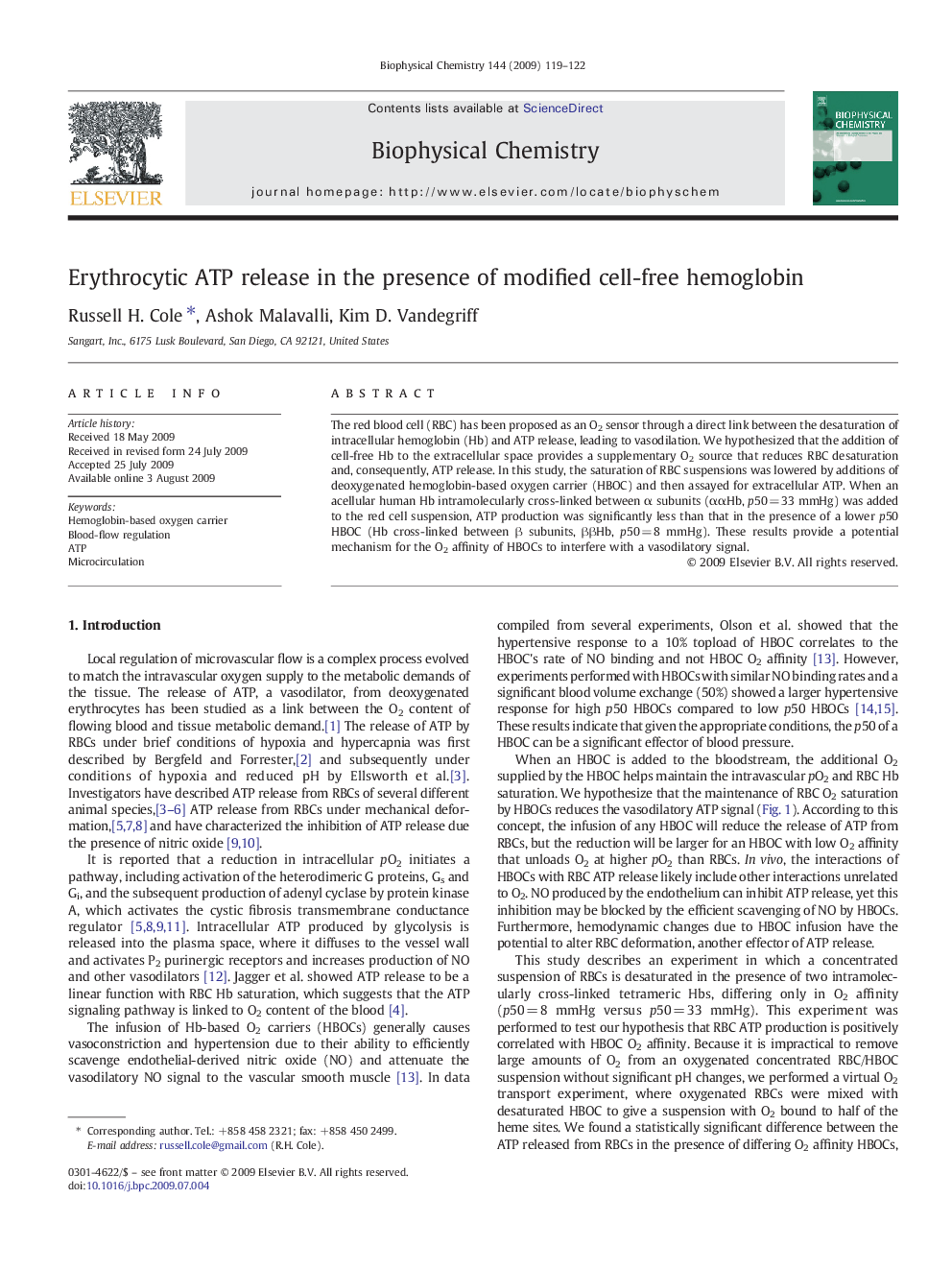| Article ID | Journal | Published Year | Pages | File Type |
|---|---|---|---|---|
| 5371775 | Biophysical Chemistry | 2009 | 4 Pages |
The red blood cell (RBC) has been proposed as an O2 sensor through a direct link between the desaturation of intracellular hemoglobin (Hb) and ATP release, leading to vasodilation. We hypothesized that the addition of cell-free Hb to the extracellular space provides a supplementary O2 source that reduces RBC desaturation and, consequently, ATP release. In this study, the saturation of RBC suspensions was lowered by additions of deoxygenated hemoglobin-based oxygen carrier (HBOC) and then assayed for extracellular ATP. When an acellular human Hb intramolecularly cross-linked between α subunits (ααHb, p50 = 33 mmHg) was added to the red cell suspension, ATP production was significantly less than that in the presence of a lower p50 HBOC (Hb cross-linked between β subunits, ββHb, p50 = 8 mmHg). These results provide a potential mechanism for the O2 affinity of HBOCs to interfere with a vasodilatory signal.
